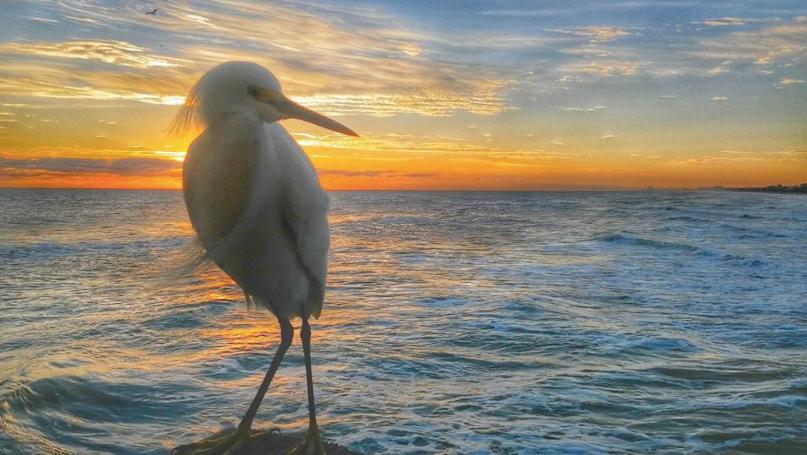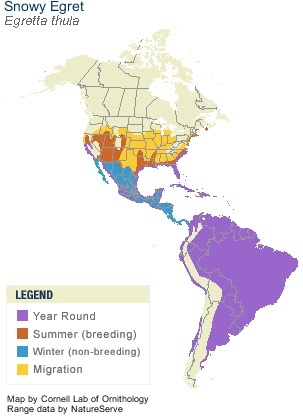
 Photo by Steven Bibeault for Headline Surfer / This Snowy Egret was photographed near along the shoreline on Jan. 11, 2017, in Daytona Beach, Florida. At left is a map showing the terrain of the snowy egret, which is seen year-round along the Florida coastline.
Photo by Steven Bibeault for Headline Surfer / This Snowy Egret was photographed near along the shoreline on Jan. 11, 2017, in Daytona Beach, Florida. At left is a map showing the terrain of the snowy egret, which is seen year-round along the Florida coastline.DAYTON BEACH, Fla. -- During the breeding season, adult Snowy Egrets, like the one featured in the scenic photograph taken here on the World's Most Famous Beach®, develop long, wispy feathers on their backs, necks, and heads.
Way back in the 1880s, these plumes were valued at $32 per ounce, which was twice the price of gold at the time. Plume-hunting for the fashion industry killed many Snowy Egrets and other birds until reforms were passed in the early20th century. The recovery of shorebird populations through the work of concerned citizens was an early triumph and helped give birth to the conservation movement and what we know today as eco-tourism.
Among the most elegant of the herons, the slender Snowy Egret sets off immaculate white plumage with black legs and brilliant yellow feet. Those feet seem to play a role in stirring up or herding small aquatic animals as the egret forages.
Breeding Snowy Egrets grow filmy, curving plumes that once fetched astronomical prices in the fashion industry, endangering the species. Early conservationists rallied to protect egrets by the early twentieth century, and this species is once again a common sight in shallow coastal wetlands, according to the Cornell Lab of Ornithology.
Since he lives near the Atlantic Ocean in greater Daytona Beach, amateur photographer Steve Bibeault enjoys taking pictures of scenic wildlife, especially birds. And he gets a big thrill out of seeing his scenic images showcased in Headline Surfer.
His favorite birds are the brown pelicans with their large wingspans, which they use to glide along the surf in search of fish below.
You can order these and other images at https://www.facebook.com/Stevescellphone/ or email him: SteveBibeaultPhoto@gmail.com.
MULTIMEDIA:
YouTube download / video by Kim DeGiulio Goecke /

